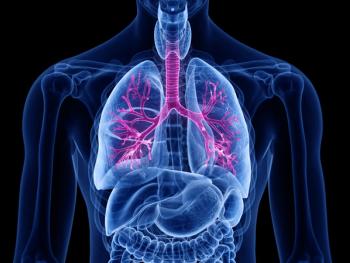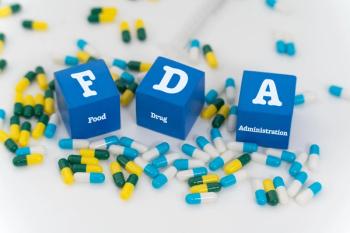During the COVID-19 pandemic years of 2021 and 2022, health care and medication affordability improved for low-income adults compared to pre-pandemic affordability, further tightening the gap between low- and high-income individuals, according to research published in JAMA Health Forum.1
However, upon discovering these results, researchers claim that the conclusion of health care policies allowing affordability during COVID-19—while unemployment and economic loss increased—could be detrimental to the health care economy going forward.
“The onset of the COVID-19 pandemic in the US led to a dramatic rise in unemployment, which disproportionately impacted low-income adults. As a result, millions of people experienced economic loss, deepening financial strain, and disruptions in health insurance coverage,” wrote the study authors. “These changes threatened to worsen low-income adults’ ability to afford medical care and prescription drugs and, ultimately, widen income-based inequities in access to care and health.”
Key Takeaways
- Researchers analyzed the change in health care and prescription drug affordability in high- and low-income adults from pre-pandemic levels compared with 2021 and 2022, the 2 years that followed the pandemic.
- Low-income adults were 11.2% less likely to delay care and 10.7% less likely to avoid it due to cost. They were 9.4% less likely to delay medications due to cost, 8.9% less likely not to fill prescriptions, 6.7% less likely to skip medications, and 7.3% less likely to take less medications.
- These findings show the federal government's capability to adjust policy for the American public in times of need.
With countrywide shutdowns of non-essential businesses due to the pandemic, the US experienced a situation of financial instability. As a response to this disruption, the federal government created several policies to assist individuals and families with ensuing financial hardships, including the Families First Coronavirus Response Act; the Coronavirus Aid, Relief, and Economic Security (CARES) Act; and the American Rescue Plan Act. The government’s policies and plans of action were set in place to ensure the utmost affordability of Medicaid insurance, specifically benefitting lower-income households.1
As part of their study, researchers aimed to assess overall health care and prescription drug affordability by comparing pre-pandemic costs to the 2 years following the beginning of the pandemic in 2020. They drew data from 89,130 US adults (51.6% women; mean age 48 years) and measured the likeliness of them to delay or avoid care due to costs, among other outcomes.
“We examined measures of health care affordability, including delaying medical care due to costs, not seeking care due to costs, worrying about paying medical bills, problems paying medical bills, and inability to pay current medical bills among those who reported having problems paying medical bills. In addition, we examined measures of prescription medication affordability (among those taking medications), including not filling prescription medications due to cost, delaying filling prescription medications to save money, skipping prescription medication doses to save money, and taking less prescription medications to save money,” investigators wrote.
Starting with primary medical care, from 2020 to 2022, low-income adults were 11.2% less likely to delay care and 10.7% less likely to avoid it due to cost. Their higher-income counterparts, however, showed no significant change in their actions regarding health care affordability and likeliness to delay or avoid care.
Furthermore, both high- and low-income adults were less likely to have issues with paying their medical bills. However, there was no change in both groups’ feelings about medical bills, with researchers reporting that most of the population was still “worrying” about paying bills from before the pandemic through 2022.1
Researchers then looked at prescription affordability and found that low-income adults were 9.4% less likely to delay medications due to cost, 8.9% less likely not to fill prescriptions, 6.7% less likely to skip medications, and 7.3% less likely to take less medications.
“Despite initial increases in unemployment and economic loss, we found that medical care and prescription medications became more affordable for US adults during the COVID-19 pandemic. Notably, this was a change from the pre-pandemic trend of health care affordability, which had been stable if not worsening. The results are also a stark contrast to prior historic economic downturns, like the Great Recession, which saw a significant decline in health care affordability that persisted for several years,” continued the authors.1
According to the Congressional Research Service, unemployment hit an all-time high in the US at 14.8% by April 2020. It then declined to 6.2% in February 2021, which was still almost 3% higher than February 2020, when pandemic-related shutdowns were beginning.2
Indeed, the contrast between the pandemic and other American financial crises like the Great Depression is eye-opening. While several experts and American adults faced unprecedented times during the pandemic, the results of this study confirm that health care and prescription medications were prepared for the challenges that would come with COVID-19.
And with researchers’ ability to quantify health care affordability, showing that affordable access to health care can be executed during unprecedented times, it raises future concerns about how the pendulum has swung following 2021 and 2022.
“Our findings have critically important public health implications as many COVID-19 pandemic-related state and federal safety-net policies come to an end,” they concluded.1
READ MORE: Health Care Affordability in the Election Spotlight
Ready to impress your pharmacy colleagues with the latest drug information, industry trends, and patient care tips? Sign up today for our free Drug Topics newsletter.
References
1. Mein SA, Marinacci LX, Zheng Z, et al. Changes in health care and prescription medication affordability in the US during the COVID-19 pandemic. JAMA Health Forum. 2024;5(6.9):e241939. doi:10.1001/jamahealthforum.2024.1939
2. Unemployment rates during the COVID-19 pandemic: in brief. Congressional Research Service. March 12, 2021. Accessed July 15, 2024. https://crsreports.congress.gov/product/pdf/R/R46554/9












































































































































































































